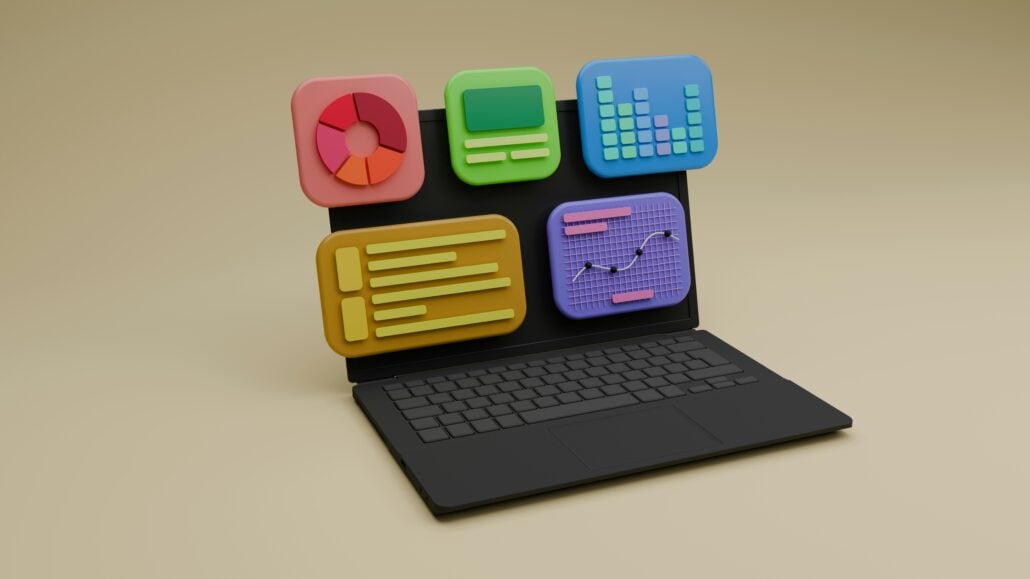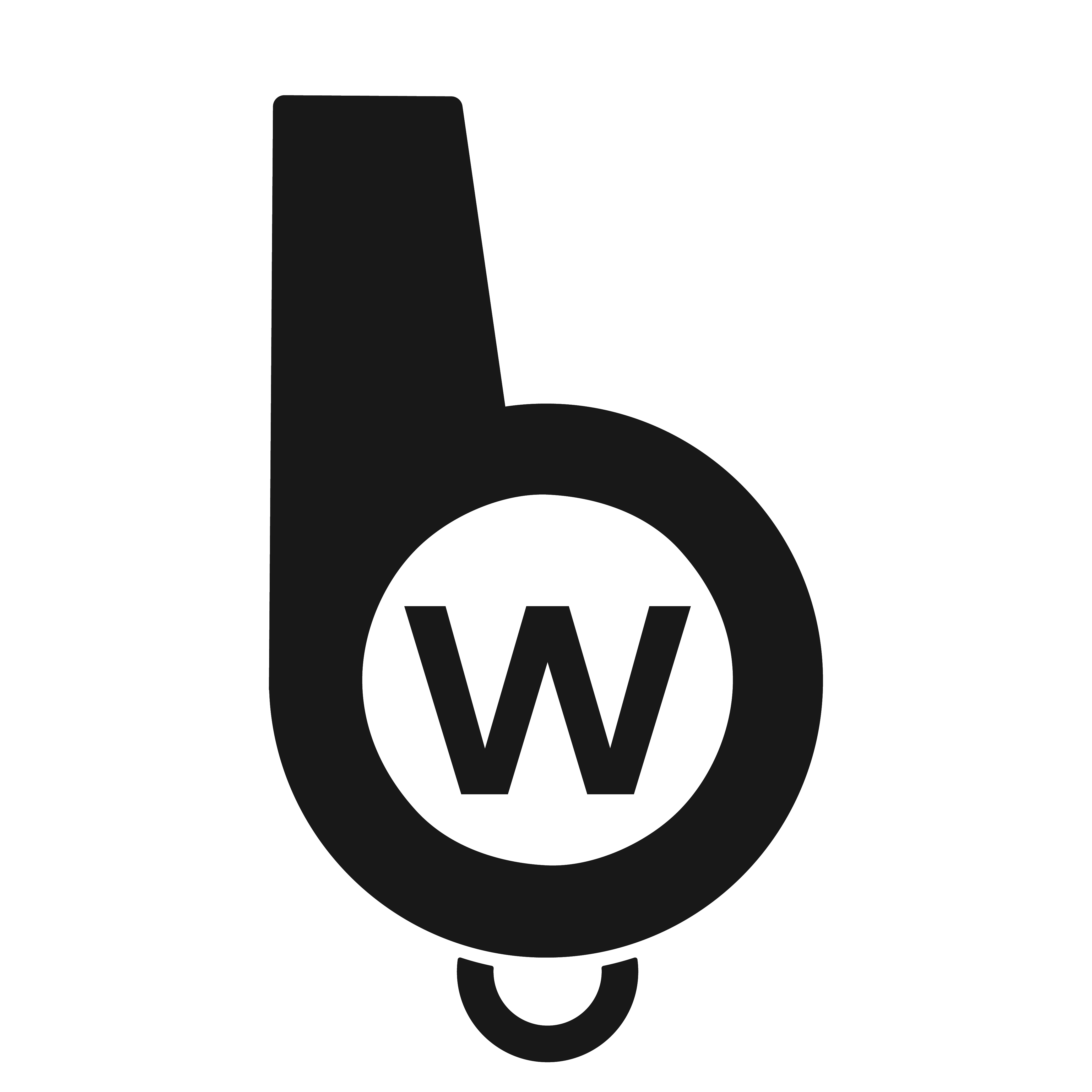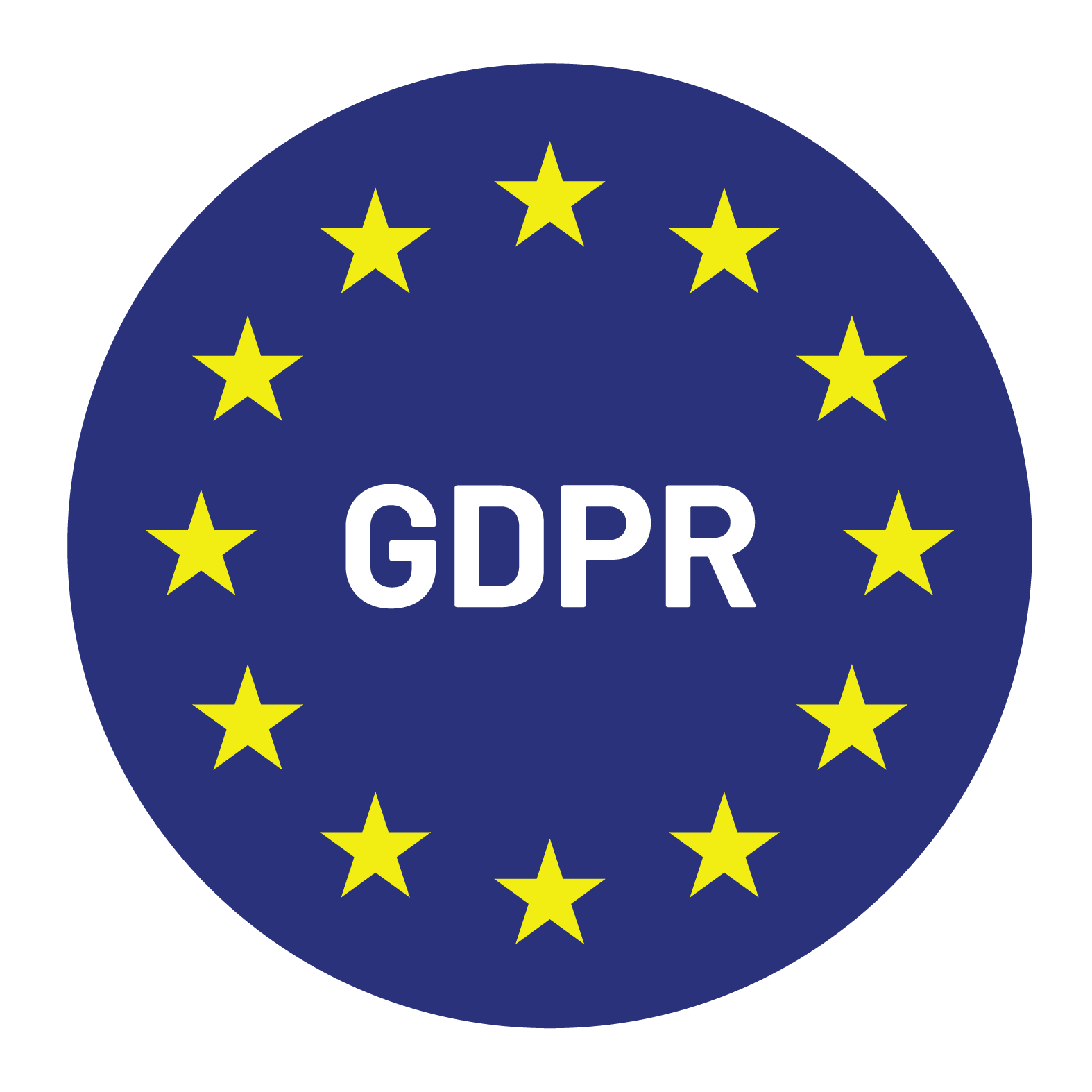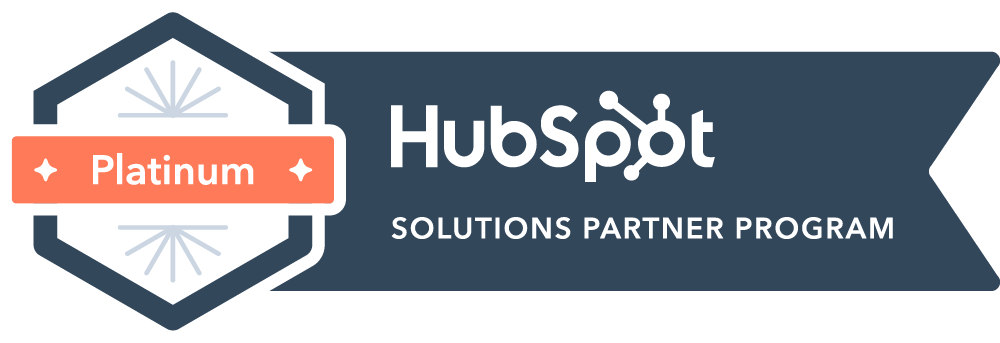12 Critical Questions to Ask Before Signing a B2B Lead Provider

Table of Contents When it comes to scaling a SaaS or B2B company, your pipeline is only as strong as the leads fueling it. That’s why so many businesses turn to B2B lead providers; specialized companies that deliver qualified prospects so your sales team can focus on closing deals. But not all providers are created equal. Choosing the wrong partner can mean wasted budget, inflated customer acquisition costs (CAC), and frustrated sales reps chasing unqualified leads. To avoid these pitfalls, here are 12 critical questions you should ask before signing with any B2B lead generation company. 1. What Industries and Ideal Customer Profiles (ICPs) Do You Specialize In? Every B2B company has a unique audience, and industry expertise matters more than most buyers realize. A provider that delivers quality leads in SaaS cybersecurity may not perform well in industrial manufacturing due to different buying behaviors, decision-making processes, and communication preferences. Ask for ICP alignment examples: Do they understand your buyers’ roles, pain points, and decision cycles? Can they articulate the specific challenges your prospects face and how those translate into buying triggers? Look for industry-specific case studies to confirm expertise. A provider should be able to show measurable results from companies similar to yours, not just generic success stories. A provider with proven ICP alignment saves you months of trial and error while significantly improving conversion rates from the start. 2. How Do You Define and Measure Lead Quality? Lead quality is the single most important factor in choosing a provider. Quantity means nothing if conversion rates suffer, and too many companies get wooed by impressive lead volumes that ultimately waste sales resources. Do they track MQL-to-SQL conversion rates? This metric reveals whether their leads actually progress through your funnel or stall at the first sales touchpoint. Can they explain how they qualify intent vs. just delivering contact lists? There’s a massive difference between someone who downloaded a whitepaper and someone actively researching solutions to solve an immediate business problem. Red flag: Providers that sell “thousands of leads” without explaining conversion quality metrics are essentially selling you contact lists, not qualified opportunities. 3. What Data Sources Do You Use to Build Lead Lists? Data accuracy makes or breaks a campaign. Outdated or purchased lists often lead to bounced emails, wasted calls, and damage to your sender reputation. In today’s privacy-conscious environment, data sourcing practices also carry legal and reputational risks. Do they use human-validated research? The best providers combine automated data gathering with human verification to ensure accuracy and relevance. Are they leveraging intent data, firmographics, and technographics? Modern lead generation requires understanding not just who prospects are, but what they’re actively researching and what technologies they currently use. Providers that invest in clean, compliant, and verified data are far more reliable than list resellers who prioritize volume over accuracy. 4. Can You Share Conversion Benchmarks From Similar Clients? Any provider worth your budget should have performance benchmarks based on real client results, not industry averages or theoretical projections. Ask for average conversion rates from lead to opportunity within your specific industry and company size. These benchmarks should include timeframes, as some industries have longer nurture cycles. Inquire about cost per qualified meeting (CPQM) rather than just cost per lead. This metric reveals the true economic value of their services. This data helps you compare providers on results, not just price, and sets realistic expectations for your internal stakeholders about campaign performance and ROI timelines. 5. What Channels Do You Use for Outreach? Modern B2B buyers don’t respond to a single-channel approach. Research shows that multi-channel campaigns generate 2-3x higher response rates than single-channel efforts. A good partner should provide comprehensive B2B lead generation services across multiple touchpoints. Cold calling remains effective for high-value prospects when properly targeted and timed. Personalized email campaigns should go beyond basic merge tags to include relevant industry insights and value propositions. LinkedIn and social prospecting allow for warmer introductions and relationship building before direct outreach. Content-driven nurture helps educate prospects and build trust over longer sales cycles. Red flag: Providers that rely only on mass email campaigns are using outdated tactics that increasingly fail in today’s sophisticated B2B environment. 6. How Do You Personalize Outreach? Generic outreach doesn’t convert in 2025. With buyers receiving dozens of sales messages daily, personalization is essential for breaking through the noise. Do they tailor messaging by industry, role, or pain point? Effective personalization requires understanding not just who someone is, but what specific challenges they face in their current role. Do they use dynamic fields, case studies, or references to buyer intent signals? The best providers incorporate recent company news, hiring patterns, funding announcements, or technology changes into their outreach. The best B2B lead providers go beyond “first-name” personalization to deliver messages that demonstrate a genuine understanding of the prospect’s business situation and immediate needs. 7. What Technology Stack Powers Your Lead Generation? A tech-enabled provider has a significant competitive advantage in today’s data-driven sales environment. Do they integrate with CRMs like HubSpot or Salesforce? Easy integration ensures data flows properly between systems and provides your sales team with complete visibility into prospect interactions. Are they using AI tools for targeting and sequencing? Advanced providers use machine learning to optimize send times, personalize messaging at scale, and predict which prospects are most likely to convert. How do they track analytics across touchpoints? Multi-channel attribution helps you understand which combination of activities drives the best results. Providers with strong RevOps alignment maximize visibility and reporting for your sales team while ensuring consistent data quality across your entire tech stack. 8. How Do You Handle Compliance and Data Privacy? GDPR, CCPA, and regional privacy laws make compliance non-negotiable. Data privacy violations can result in significant fines, legal complications, and lasting damage to your brand reputation. Do they source opt-in data ethically? Understand exactly how they acquire contact information and whether prospects have consented to business communications. How do they ensure compliance
How B2B Appointment Setting Agencies Reach Decision-Makers

Table of Contents Senior decision-makers start their day sifting through a flood of outreach. Inboxes fill with automated emails, calls are screened, and LinkedIn requests stack up faster than they can be read. Amid that noise, even the most thoughtful sales pitch struggles to be noticed. The numbers highlight the scale of the problem. B2B cold emails now average 21–25% open rates and only 5–10% reply rates, depending on targeting and personalization. Buying groups are expanding as well. Forrester reports that software purchase decisions often involve 13 stakeholders across different functions. With larger committees and lower response rates, reaching the right people now requires more precision and consistency than most internal teams can sustain. B2B appointment setting agencies are built to meet this challenge by combining data, strategy, and persistent outreach to secure meetings with true decision-makers. Why Decision-Makers Are Harder to Reach in 2025 The path to an executive’s calendar is longer and more complex than it was even a few years ago. Gartner reports that the average B2B purchase now involves six to ten stakeholders, creating larger buying committees and slowing decision-making. Each participant brings different priorities, which makes it harder to tailor a message that resonates with all. At the same time, executives are inundated with inbound noise. Email volumes continue to climb, LinkedIn has become saturated with templated connection requests, and phone calls often go unanswered. The rise of remote work has added new obstacles, with many decision-makers working flexible schedules that make them harder to reach through traditional office lines. The combination of larger buying groups, digital-first decision-making, and relentless outreach means that getting a single meeting with the right person requires more precision and persistence than most in-house teams can sustain on their own. Strategies Appointment Setting Agencies Use to Reach Decision-Makers Precision Targeting with Ideal Customer Profiles The foundation of every successful appointment setting campaign is a sharply defined Ideal Customer Profile (ICP). Agencies build these profiles using criteria such as company size, industry, geography, and revenue range, ensuring that outreach targets accounts most likely to convert. To refine targeting further, agencies utilize data enrichment tools such as ZoomInfo, Apollo, and Clearbit. These platforms provide detailed firmographic and technographic data, helping teams identify the right contacts and detect buying signals. They also track company triggers such as funding rounds, leadership changes, or new technology adoption, allowing outreach to align with moments of high intent. This level of targeting ensures that campaigns focus on quality over quantity, increasing the chances of securing meetings with senior executives who have the authority to act. Multi-Channel Outreach Campaigns A single-channel approach rarely succeeds with executives. Appointment setting agencies design multi-channel campaigns that combine email, LinkedIn, phone calls, and sometimes retargeting ads to create multiple touchpoints. Sequencing is key. Agencies often start by building familiarity through social engagement or informative emails before making a direct meeting request. By varying channels and timing, they increase the likelihood of reaching a decision-maker in their preferred medium and reduce the risk of messages being ignored. This approach not only increases engagement but also signals persistence and professionalism, qualities executives respect when evaluating potential partners. Personalized Messaging and Value Positioning Decision-makers respond to messaging that focuses on business outcomes, not product features. Appointment setting agencies craft communications that speak directly to the priorities of executives, such as revenue growth, cost reduction, or operational efficiency. Personalization goes beyond using a prospect’s name. Agencies reference industry trends, competitive benchmarks, or specific pain points to show a deep understanding of the prospect’s world. Storytelling and relevant case studies are often used to demonstrate results in similar organizations, making outreach both credible and compelling. This tailored approach helps executives see immediate relevance and value in the conversation, making them more willing to accept a meeting. Leveraging Social Proof and Authority Signals Credibility is critical when approaching senior leaders. Agencies integrate social proof into their outreach by highlighting case studies, client testimonials, or thought leadership content. Links to relevant content may be included in emails or LinkedIn messages, giving prospects an opportunity to validate the agency’s expertise before responding. This quiet reinforcement of authority builds trust and reduces the perceived risk of engaging with an unfamiliar company. Timing and Cadence Optimization Even the most compelling message will fail if it arrives at the wrong time. Appointment setting agencies use data-driven insights to optimize outreach schedules, analyzing when executives are most likely to respond based on time of day and day of the week. Campaigns are structured around carefully designed cadences that typically include 12 to 15 touchpoints over several weeks. This balance ensures persistence without causing fatigue. Agencies continuously test subject lines, call scripts, and follow-up timing to improve response rates and keep engagement high. Tools and Technology Agencies Use to Reach Executives Technology is at the core of modern appointment setting. Sales engagement platforms such as Outreach, Salesloft, and Apollo enable teams to automate sequences while maintaining a human touch. Intent data platforms like 6sense and Bombora help identify accounts that are actively researching relevant solutions, allowing agencies to prioritize prospects who are most likely to buy. CRM systems such as Salesforce and HubSpot keep marketing and sales aligned, ensuring that leads are handed off seamlessly once a meeting is booked. AI-powered personalization tools further enhance campaigns by generating custom messaging at scale without sacrificing quality. This integrated tech stack allows appointment setting agencies to operate with speed, precision, and measurable efficiency, giving their clients a significant edge in reaching decision-makers. Metrics That Show Agencies Are Reaching the Right People The value of an appointment setting agency is measured not by the number of meetings booked but by the quality of those meetings. Key performance indicators include decision-maker engagement rate, meeting acceptance rate, and the conversion of booked meetings to sales-qualified leads. Agencies focused on B2B appointment setting track these metrics closely to ensure they are connecting with executives who have the authority to advance deals. Benchmarks for success in 2025
12 Reasons Your Sales Pipeline Is Running Dry

Table of Contents Nothing strikes fear into a sales leader’s heart like staring at a thin pipeline. When your sales funnel starts looking more like a leaky bucket than a steady stream of opportunities, revenue targets become impossible dreams and quarterly forecasts turn into guessing games. Every empty stage in your funnel points to specific, fixable problems in your lead generation strategy. That’s why more businesses are turning to B2B lead providers to diagnose, repair, and supercharge their pipeline generation. If your sales team is struggling to find qualified prospects, here are 15 reasons your sales pipeline might be running dry and how B2B lead generation services can help you fix each one. 1. Your Ideal Customer Profile (ICP) Is Outdated or Too Broad Your pipeline dries up when you’re targeting everyone instead of someone. Many companies create ICPs once and never revisit them, even as market conditions andbuyer behaviors change. An outdated ICP leads to wasted resources on prospects who will never buy. You might be targeting companies that are too small, lack budget authority, or don’t have the pain points your solution solves. Conversely, an overly broad ICP spreads your efforts too thin, resulting in generic messaging that resonates with no one. How to Fix it? Professional B2B lead providers conduct comprehensive ICP audits using data analytics, win/loss analysis, and buyer interviews. They identify your highest-converting customer segments and create laser-focused targeting criteria. The best outsourced lead generation companies use advanced firmographic and technographic data to build precise prospect lists that align perfectly with your sales team’s strengths. 2. You’re Competing in Oversaturated Markets When every competitor targets the same prospects with similar messages, breakthrough becomes nearly impossible. Oversaturated markets create noise that drowns out your value proposition, forcing prospects to tune out all vendor communications. This problem compounds in popular sectors like cybersecurity, HR tech, or marketing automation, where prospects receive dozens of sales emails daily. How to Fix it? B2B lead generation companies help identify underserved market segments or geographic regions where competition is lighter. They use intelligence tools to find prospects who aren’t being heavily targeted by your competitors, creating opportunities for pipeline development. 3. Your Value Proposition Isn’t Resonating A weak or unclear value proposition is pipeline poison. If prospects can’t quickly understand what you do, why they need it, and how you’re different from alternatives, they’ll simply ignore your outreach efforts. Many companies focus on features rather than business outcomes, use industry jargon that confuses buyers, or make claims they can’t substantiate. Without a compelling reason to engage, prospects default to the status quo: doing nothing. How to Fix it? B2B lead providers conduct messaging audits and A/B testing to identify what resonates with your target audience. They craft value propositions that speak directly to buyer pain points and demonstrate clear ROI. The best B2B lead generation services continuously optimize messaging based on response rates and conversion data. 4. Single-Channel Dependency Creates Vulnerability Relying too heavily on one lead generation channel is like building your business on quicksand. Single-channel strategies like paid advertising, cold email, or referrals create dangerous dependencies that can disappear overnight. Platform algorithm changes, increased competition, regulatory updates, or economic shifts can eliminate your primary lead source instantly. How to Fix it? Professional B2B lead generation companies implement diversified, multi-channel strategies that reduce risk while increasing reach. They orchestrate integrated campaigns across cold calling, email sequences, social selling, content syndication, and account-based marketing. This diversification ensures consistent pipeline flow even if individual channels underperform. 5. Inadequate Lead Nurturing Lets Prospects Slip Away Most B2B purchases involve lengthy consideration periods where prospects research options, build internal consensus, and evaluate alternatives. Without systematic nurturing, interested prospects disappear into the void, often resurfacing months later as competitors’ customers. Companies often focus exclusively on top-of-funnel lead generation while neglecting middle-funnel nurturing. When prospects don’t convert immediately, they are often abandoned rather than educated and nurtured as future opportunities. How to Fix it? Outsourced lead generation providers implement sophisticated nurturing sequences that keep prospects engaged throughout extended sales cycles. They utilize marketing automation, personalized content, and multi-touch campaigns to nurture relationships until prospects are ready to make a purchase. 6. Poor Lead Quality Wastes Sales Resources Quantity without quality destroys pipeline efficiency. When marketing generates leads that don’t fit your ICP, lack buying authority, or aren’t ready to purchase, sales teams waste time on conversations that never convert. This problem often stems from misaligned lead scoring, inadequate qualification criteria, or incentive structures that reward volume over value. Sales reps become frustrated with poor-quality leads and may stop following up on marketing-generated prospects entirely. How to Fix it? Professional B2B lead providers use sophisticated qualification frameworks that evaluate prospects based on BANT criteria (Budget, Authority, Need, Timeline) plus intent signals and buying stage indicators. They deliver sales-ready leads that convert at much higher rates than unqualified contacts. 7. Inconsistent Prospecting Activity Creates Pipeline Gaps Pipeline generation requires consistent, systematic activity. When prospecting happens sporadically during slow periods or when quotas are at risk, pipeline flow becomes unpredictable and inadequate for sustained growth. How to Fix it? B2B lead generation services provide consistent, predictable prospecting activity that maintains steady pipeline flow. They implement systematic outreach schedules, follow-up sequences, and activity metrics that ensure continuous pipeline development regardless of internal priorities or distractions. 8. Inadequate Technology Stack Limits Effectiveness Modern lead generation requires sophisticated technology for research, outreach, tracking, and optimization. Companies using outdated tools or disconnected systems can’t compete effectively against well-equipped competitors. Without proper CRM integration, sales intelligence platforms, automation tools, and analytics systems, lead generation efforts become inefficient and unmeasurable. Sales teams waste time on manual tasks that could be automated, while managers lack visibility into what’s working. How to Fix it? Professional B2B lead providers invest in cutting-edge technology stacks including intent data platforms, sales automation tools, advanced CRM systems, and attribution analytics. They leverage these tools to improve targeting accuracy, personalize outreach at scale,
B2B SaaS Demand Generation Tech Stack: Essential Tools for 2025

Table of Contents B2B SaaS demand generation has become more complex than at any other point in the sector’s history. Budgets are tighter, buyer committees are larger, and decision-making cycles are longer. Prospects now expect tailored engagement, seamless experiences, and measurable value before they ever speak with sales. Technology is the backbone of how SaaS companies meet these expectations. The right demand generation tech stack allows businesses to identify in-market accounts, deliver personalized outreach, and measure impact with clarity. The wrong stack, however, creates inefficiencies, wasted spend, and frustrated teams. This blog explores the essential B2B SaaS demand generation tools for 2025. We will outline the pillars every SaaS leader should prioritize, examine the technologies reshaping how demand is created and captured, and highlight how to build a stack that supports growth without unnecessary complexity. The Core Pillars of a B2B SaaS Demand Generation Tech Stack Every demand generation strategy relies on three core functions: attract, convert, and measure. A well-built stack is structured to serve each of these areas seamlessly. Attract is about reaching and engaging the right buyers through campaigns, content, and targeted outreach. Convert focuses on capturing leads, nurturing them through personalized experiences, and qualifying them effectively before sales engagement. Measure ensures every initiative can be tracked, attributed, and optimized to deliver ROI. These three functions form the basis for how SaaS companies should approach their technology investments. With that framework in place, we can explore the essential demand generation tools for 2025. Essential Demand Generation Tools for 2025 Marketing Automation Platforms Marketing automation is the foundation of any B2B SaaS demand generation strategy. Without it, scaling personalized campaigns and lead nurturing is nearly impossible. The best platforms in 2025 provide advanced workflows, lead scoring, and deep integrations with CRM systems. They enable SaaS marketers to design nurture sequences that reflect buying intent, manage complex drip campaigns, and create clear rules for qualifying leads. Leading platforms include HubSpot, Marketo, Pardot, and Customer.io. Each supports SaaS teams in managing multi-channel campaigns while aligning closely with sales. CRM Platforms Built for SaaS Growth CRMs are not just databases. They are the central hub of SaaS growth, ensuring visibility into every stage of the customer journey. For demand generation, CRMs provide pipeline management, opportunity tracking, and alignment between marketing and sales teams. The most effective CRMs integrate seamlessly with marketing automation and account-based marketing software, ensuring no lead is lost in transition. Top platforms in 2025 include Salesforce, HubSpot CRM, and Pipedrive. Intent Data and Buyer Intelligence Platforms One of the most important shifts in SaaS demand generation is the reliance on intent data. By identifying signals that reveal which accounts are actively researching a solution, intent data helps prioritize outreach and improve lead quality. Providers such as Bombora, 6sense, Demandbase, and ZoomInfo gather signals from search behavior, content consumption, and industry-specific research. This intelligence allows SaaS companies to engage accounts before competitors, creating a meaningful advantage in crowded markets. Account-Based Marketing (ABM) Software ABM has become a central pillar of B2B SaaS demand generation. By targeting high-value accounts with tailored campaigns, companies can align marketing and sales more effectively. ABM software enables account scoring, personalized campaign orchestration, and multi-channel targeting. The most prominent solutions in 2025 include Demandbase, Terminus, and RollWorks, each designed to support precise targeting and measurable engagement across defined account lists. Content Distribution and Engagement Tools Even the most compelling content requires effective distribution. SaaS demand generation strategies increasingly rely on syndication platforms, webinar tools, and social publishing systems to ensure reach. Examples include ON24 for webinars and virtual events, Uberflip for content hubs, Hootsuite for social publishing, and LinkedIn Ads Manager for paid campaigns. These tools help ensure content reaches the right audiences and drives consistent engagement. Data Enrichment and Lead Qualification Tools Accurate and complete data is essential for demand generation. Enrichment platforms ensure leads are qualified with correct firmographic and contact details, reducing wasted effort by sales teams. Leading providers include Clearbit, ZoomInfo, and Apollo.io, which offer real-time enrichment and integrations that feed directly into CRMs and automation platforms. Analytics and Attribution Software With longer SaaS buying cycles, multi-touch attribution is no longer optional. Analytics platforms that provide funnel visibility, revenue attribution, and cohort analysis allow leaders to understand what is driving pipeline contribution. Tools such as Google Analytics 4, HubSpot Attribution, and Bizible offer advanced insights, giving SaaS leaders the ability to connect campaigns to outcomes and allocate budget effectively. Building a Tech Stack That Works Together The true power of a demand generation stack lies not in the number of tools, but in how well they integrate. Poor interoperability leads to data silos, wasted licenses, and manual workarounds. SaaS leaders should prioritize tools that connect seamlessly across marketing, sales, and customer success. A smaller, integrated stack often outperforms a larger one filled with disconnected platforms. Tool bloat creates complexity, while tight integration drives efficiency and results. How to Audit and Optimize Your Demand Generation Stack in 2025 Maintaining an effective stack requires constant review and optimization. A structured audit ensures the technology is supporting business goals rather than draining resources. Step 1: Assess current KPIs. Metrics such as MQL-to-SQL conversion rates, CAC-to-LTV ratios, and pipeline contribution provide a clear picture of performance. Step 2: Identify gaps. Look for weaknesses in attribution, intent data coverage, or lead nurture. These gaps signal where technology investments should be made. Step 3: Create a roadmap. Decide which tools to adopt, replace, or remove. Focus on building integrations that reduce manual effort. Step 4: Ensure adoption and training. A stack is only as effective as the teams using it. Training and cross-functional adoption are essential for maximizing value. Future Trends in B2B SaaS Demand Generation Tech As SaaS companies prepare for 2025 and beyond, several trends are shaping demand generation technology: AI-driven personalization. Platforms are moving toward real-time personalization at scale, tailoring outreach to individual buyer signals. Predictive analytics. Tools are advancing to forecast pipeline contribution and identify accounts most
10 Signs Your B2B Lead Generation Strategy Is Failing

Table of Contents A strong pipeline is the heartbeat of every B2B SaaS or enterprise sales team. But here’s the hard truth: most companies overestimate the effectiveness of their B2B lead generation strategy. Campaigns might be producing leads, but if they’re not the right ones or not converting, your revenue targets will always feel out of reach. That’s why forward-thinking companies are increasingly partnering with B2B lead providers. These specialized agencies bring expertise, data, and scalable systems to fix gaps in lead generation strategies. If you’re unsure whether your current approach is working, here are 10 warning signs your B2B lead generation strategy is failing, and what to do about it. 1. You’re Generating Leads, But Sales Says They’re Low Quality One of the most common signs of a failing strategy is misalignment between marketing and sales. If sales reps are rejecting leads or conversion from MQLs to SQLs is under 20%, your targeting is fundamentally off. This disconnect often stems from outdated buyer personas or marketing teams focusing on vanity metrics rather than sales-ready prospects. Many companies define leads too broadly, counting every whitepaper download or webinar attendee as a qualified prospect. Meanwhile, sales teams waste hours following up on contacts who lack budget, authority, need, or timeline (BANT criteria). Poor lead quality damages sales morale, creates friction between departments, and ultimately inflates customer acquisition costs. 2. Pipeline Growth is Inconsistent Do you experience the “feast or famine” cycle? This inconsistency destroys forecasting accuracy, creates pressure on closing teams, and makes it nearly impossible to plan for sustainable growth. Inconsistent pipeline flow often results from reactive rather than strategic lead generation. Companies may launch campaigns sporadically, rely too heavily on seasonal events, or lack systematic nurturing processes. When leads don’t convert immediately, they’re often abandoned rather than nurtured through longer sales cycles. This volatility particularly affects resource planning. Sales teams either sit idle during dry periods or become overwhelmed during peak times, leading to poor prospect experiences and missed opportunities. Finance teams struggle to predict revenue, making strategic investments difficult to justify. 3. Your Cost Per Qualified Meeting is Too High You may think your lead generation strategy is effective until you calculate the real cost per qualified meeting (CPQM). Many companies underestimate true costs by only counting direct advertising spend while ignoring salaries, software subscriptions, management overhead, and opportunity costs. When you factor in SDR salaries ($60K-$80K annually), CRM and automation tools ($500-$2,000 monthly), data costs, and management time, the real cost per qualified meeting often exceeds $500-$800. If your average deal size doesn’t support this acquisition cost, your strategy is unsustainable. Hidden costs compound the problem. Failed campaigns, training new hires, technology integration challenges, and compliance requirements all add expenses that aren’t immediately visible but significantly impact ROI calculations. 4. Over-Reliance on a Single Channel Are you leaning too heavily on paid ads, email blasts, or cold calling? Single-channel strategies are increasingly risky in today’s fragmented attention economy. Algorithm updates can devastate organic reach overnight, rising ad costs can make campaigns unprofitable, and inbox fatigue reduces email effectiveness. B2B buyers now research across multiple touchpoints before engaging with vendors. They might see your LinkedIn ad, visit your website, read reviews on G2, and check your company’s recent funding news before responding to an email. Single-channel approaches miss these complex buyer journeys and fail to build the trust necessary for enterprise sales. Platform dependency also creates vulnerability. iOS privacy changes affected Facebook advertising, Google’s algorithm updates impact organic rankings, and LinkedIn’s pricing changes can alter campaign economics. Companies relying on single channels often see dramatic performance drops when platforms change policies. 5. High SDR Turnover is Hurting Output If your in-house sales development team is constantly churning, your strategy isn’t sustainable. SDR turnover rates average 35-40% annually across industries, but some companies experience much higher rates. Replacing and retraining SDRs costs $15,000-$25,000 per hire while disrupting pipeline momentum for months. High turnover creates a vicious cycle. Remaining team members become overworked, performance standards slip, and institutional knowledge disappears. New hires need 3-6 months to become productive, during which pipeline generation suffers. Management spends more time on recruiting and training than on strategy and optimization. The problem often reflects deeper issues: unrealistic quotas, poor training, inadequate technology, or misaligned compensation. When companies focus on activity metrics rather than outcomes, SDRs become frustrated and seek opportunities elsewhere. 6. Poor Conversion Rates at Every Funnel Stage If leads aren’t moving through your funnel efficiently, the problem extends beyond volume to fundamental process issues. Poor conversion typically indicates misaligned messaging, inadequate qualification, or generic outreach that fails to resonate with target audiences. Healthy B2B funnels show predictable conversion patterns: lead-to-MQL (20-30%), MQL-to-SQL (20-25%), SQL-to-opportunity (50-60%), and opportunity-to-close (20-25%). When these ratios fall significantly below benchmarks, systematic problems exist. Common conversion killers include: targeting too broadly, using generic messaging, lacking proper lead scoring, insufficient follow-up sequences, and poor handoff processes between marketing and sales. Each stage requires specific optimization to improve overall funnel performance. 7. You Can’t Attribute Marketing Impact to Revenue Without clear attribution, you can’t prove ROI, optimize spend effectively, or make data-driven decisions about resource allocation. If you don’t know which campaigns generate real pipeline versus vanity metrics, your strategy operates blindly. Attribution challenges multiply in B2B environments where sales cycles span months and involve multiple touchpoints. Prospects might engage with content, attend webinars, visit your website multiple times, and interact with sales reps before making decisions. Traditional last-click attribution models miss this complexity. Poor attribution also prevents optimization. You can’t identify which messages resonate, which channels drive quality leads, or which campaigns deliver the best ROI. This leads to continued investment in ineffective tactics while underfunding successful initiatives. 8. Expansion Into New Markets is Stalled Trying to break into new geographies, industries, or customer segments without seeing traction? Market expansion requires specialized knowledge of local buyer behaviors, regulatory requirements, competitive landscapes, and cultural preferences. Many companies underestimate market entry complexity.
How Appointment Generation Companies Fix a Failing B2B Sales Pipeline

Table of Contents Many B2B companies are pouring more into marketing budgets than ever, yet their sales pipelines remain worryingly thin. Ads bring traffic, webinars fill attendance sheets, and content downloads spike. But when the pipeline is reviewed at the end of the quarter, sales leaders see gaps that marketing can’t explain away. This is the reality of what some call a “pipeline drought.” Without enough qualified meetings, revenue forecasts slip, sales teams lose momentum, and customer acquisition costs rise. Appointment generation offers a way out. Unlike general lead generation, which often emphasizes volume, appointment generation focuses on producing qualified meetings that directly support sales outcomes. Done right, it bridges the gap between marketing efforts and closed revenue. For companies struggling with pipeline consistency, appointment generation companies provide a direct and measurable fix. Why Sales Pipelines Run Dry Sales pipelines fail for a number of reasons, and often the issue isn’t a lack of effort but a lack of structure. One common issue is over-reliance on inbound marketing. While inbound channels can produce strong results, they are rarely enough on their own to sustain growth. Leads from inbound often fluctuate, creating inconsistent sales activity. Another challenge is SDR turnover and burnout. Building an internal SDR team requires significant investment in hiring, training, and management. Yet many organizations face high attrition rates in these roles, leading to constant disruption and sunk costs. Lead qualification is another weak spot. Too many sales reps spend time chasing contacts who never fit the company’s ICP, which drains resources and undermines close rates. Poor sales-marketing alignment A further cause of pipeline problems lies in weak collaboration between sales and marketing. Marketing passes leads that may not be sales-ready, while sales teams grow frustrated by wasted time. When alignment breaks down, opportunities are lost in the gap. What Appointment Generation Companies Actually Do Appointment generation companies exist to fix these problems by focusing on the part of the pipeline that matters most: producing qualified meetings. It’s important to distinguish appointment generation from lead generation. Lead generation often focuses on top-of-funnel contacts and volume metrics. Appointment generation, on the other hand, is about securing meetings with decision-makers who fit the ICP and have shown buying intent. It prioritizes quality over quantity. These companies provide services such as cold calling, multi-channel outreach, lead qualification, and ICP targeting. By running structured outreach campaigns across phone, email, and social platforms, they ensure that prospects are approached consistently and professionally. Appointment generation companies also integrate directly with sales teams. They support pipeline development through CRM alignment, detailed reporting, and RevOps practices. This means that the meetings they set don’t just show up in calendars, they connect seamlessly to the company’s sales systems and goals. 6 Ways Appointment Generation Companies Rebuild Your Pipeline Consistent Meeting Flow Rather than chasing unpredictable inbound leads, appointment generation delivers a steady stream of qualified meetings. This consistency creates predictability in revenue forecasts and allows sales teams to focus on closing rather than prospecting. Faster Market Penetration When expanding into new markets, waiting for inbound leads to trickle in can delay growth. Appointment generation companies move quickly by targeting specific geographies, industries, or verticals, producing conversations in weeks rather than months. Higher Lead Quality Through structured qualification and ICP targeting, appointment generation ensures that sales teams are meeting with the right prospects. The result is higher conversion rates and shorter sales cycles. Multi-Channel Outreach Modern appointment generation is not limited to cold calls. It combines phone, email, and social touchpoints, increasing engagement rates and ensuring prospects are reached where they are most responsive. Reduced Sales Team Pressure Sales reps are most effective when they spend their time closing deals. Appointment generation removes the burden of top-of-funnel prospecting, allowing in-house teams to focus their energy on what drives revenue. Scalable Results Appointment generation companies can scale outreach efforts quickly. Instead of months of recruiting and training internal SDRs, companies gain instant access to established teams and tested processes. Real ROI of Appointment Generation Services The impact of appointment generation goes beyond filling calendars. It reshapes sales economics. By ensuring that SDR costs are shared across multiple clients, outsourced appointment generation reduces customer acquisition costs compared to building an internal team. Close rates also improve because reps spend their time in front of decision-makers rather than chasing low-quality leads. A stronger pipeline leads directly to higher win rates. Most importantly, appointment generation provides predictability. Consistent meeting flow allows companies to build accurate forecasts and align resources with revenue expectations. This stability is critical for scaling sustainably. When to Consider Partnering with an Appointment Generation Agency Not every company needs to outsource appointment generation, but there are clear indicators of when the time is right. If your pipeline is inconsistent or unpredictable, external support can stabilize it. If SDR hiring and training costs are draining resources without producing results, outsourcing provides a cost-effective alternative. Companies expanding into new markets often benefit most, as external teams can ramp quickly and build traction while internal teams focus on core markets. Finally, if your sales team needs results in weeks rather than months, appointment generation companies provide the speed that in-house efforts often cannot match. Don’t Let Your Pipeline Run Dry Appointment generation companies are not just about booking meetings, they are about restoring momentum to the sales pipeline. For B2B leaders, the difference between hitting revenue targets and missing them often comes down to the consistency of qualified meetings. Whistle has seen firsthand how targeted appointment generation transforms results. From stabilizing pipelines to opening new markets, structured outreach changes the trajectory of sales teams. For companies facing pipeline droughts, the message is clear: there is a direct and proven way to turn it around. TLDR Appointment generation solves one of the most pressing challenges in B2B sales: pipeline consistency. By producing qualified meetings through multi-channel outreach, outsourced SDR services reduce CAC, improve close rates, and provide predictable results. For companies struggling with pipeline droughts, appointment generation is the missing piece
7 Signs It’s Time to Partner with a B2B Appointment Setting Agency

Table of Contents In today’s hyper-competitive B2B SaaS landscape, building a predictable revenue engine isn’t about spray-and-pray email campaigns or crossing your fingers for warm referrals. It’s about systematically orchestrating high-quality sales conversations with the right decision-makers at companies that actually need what you’re selling. This disciplined approach commonly called appointment setting forms the foundation of modern sales development. When executed properly, it ensures your Account Executives spend their precious time closing qualified prospects instead of drowning in endless cold outreach. The challenge is managing appointment setting in-house is harder than most leaders expect. SDR turnover is high, sales tech goes underutilized, and pipelines fluctuate wildly. That’s where a B2B appointment setting agency comes in. How do you recognize when your internal approach has hit its ceiling and it’s time to bring in the experts? Here are 7 clear signs your sales team is sending you. Sign #1: Your Sales Pipeline is Inconsistent One quarter, your calendar overflows with demos and your AEs are crushing quotas. The next quarter feels like a ghost town. This destructive feast-or-famine cycle represents one of the clearest red flags that your appointment setting function is fundamentally broken. Why It Matters Inconsistent pipeline = inaccurate forecasting Reps miss quotas, causing revenue instability Investors and leadership lose confidence in growth projections Metrics to Watch Month-to-month demo fluctuation greater than 30% Reps booking less than 6–8 qualified meetings/month Low lead-to-meeting conversion rate from outbound campaigns How Agencies Solve This Appointment setting agencies run multi-channel campaigns at scale (email, LinkedIn, phone, events) to ensure a steady flow of qualified meetings. Unlike internal teams, they aren’t derailed by vacations, turnover, or bandwidth issues. Sign #2: High SDR Turnover is Hurting Performance The average SDR turnover rate is 39% annually (Bridge Group, 2024). In B2B SaaS, this number is often even higher. Every time an SDR leaves, you lose months of training, pipeline momentum, and morale. The Real Cost Impact Recruiting + onboarding: $10,000–$20,000 per SDR Ramp-up time: 3–6 months before full productivity Lost pipeline during the transition Why Agencies Win Here Agencies bring trained, experienced SDRs ready to perform You don’t carry the recruitment or retention burden Continuity: pipeline doesn’t stop when one SDR leaves 👉 Whistle provides fully managed SDR teams with 10-day deployment, eliminating months of hiring delays. Sign #3: Your Team Struggles with New Market Entry Expanding into fresh industries or geographic territories presents unique challenges that internal teams struggle to overcome. The messaging that resonates perfectly with your core market often falls completely flat when applied to new segments. Without deep market knowledge, outreach attempts feel generic and fail to open doors with decision-makers. Common Barriers Lack of market-specific messaging and ICP refinement No warm connections in new territories Struggling to adapt outreach to cultural/language nuances How Agencies Help Agencies work across industries and geos, bringing battle-tested playbooks They quickly identify decision-maker titles, pain points, and buying signals For global SaaS, multilingual SDRs ensure cultural alignment Sign #4: Your Cost Per Qualified Meeting is Too High Hiring SDRs isn’t cheap. Beyond salaries, you’re paying for management, tech stacks, training, and overhead. When you tally the full costs, the true cost per meeting often exceeds what an agency can deliver. Hidden In-House Costs Base salary + OTE: $70K–$90K annually Sales tools: $300–$500/month per rep Management overhead + enablement Ramp-up inefficiency Comparison: In-House vs Agency Cost Driver In-House SDR Team B2B Appointment Setting Agency Salary & OTE $70K–$90K per SDR Included in retainer Tech Stack $3–5K/year Included Ramp-Up Time 3–6 months 10 days (Whistle) Continuity Subject to turnover Guaranteed delivery Why Agencies Win Agencies leverage economies of scale—shared infrastructure, trained teams, and proven workflows—so your cost per qualified meeting is lower and more predictable. Sign #5: Your Sales Tech Stack is Underutilized Most SaaS companies invest heavily in sophisticated CRMs, email sequencing platforms, and data enrichment tools. Without proper implementation and ongoing optimization, these powerful systems become expensive digital shelfware that delivers minimal ROI. Common Challenges SDRs not trained on advanced automation features Dirty data clogging CRMs, leading to wasted outreach No integration between marketing automation and sales execution How Agencies Fix It Agencies ensure full utilization of tools like HubSpot, Outreach, and Apollo They maintain clean, enriched databases with human validation They integrate marketing + sales systems for seamless lead handoff 👉 Whistle specializes in HubSpot RevOps support, ensuring clients get maximum ROI on their tech stack. Sign #6: Your Team Lacks Specialized Outreach Skills B2B appointment setting in 2025 demands far more than traditional cold calling. Success requires sophisticated multi-channel orchestration combining personalized email campaigns, strategic LinkedIn engagement, skilled phone conversations, social selling techniques, and trigger event responses. Essential Skills for Today’s Market Deep personalization (account-level insights, trigger events) Conversational copywriting for emails & LinkedIn Skilled cold callers who can navigate gatekeepers Data research and enrichment expertise Why Agencies Excel Agencies hire and train SDRs exclusively for outbound mastery They adopt the latest best practices and tools across industries Global agencies bring language + cultural fluency Sign #7: You Need to Scale Quickly, But Can’t Hire Fast Enough When pipeline targets jump or your startup lands new funding, you may need to double your meeting volume in weeks, not months. Hiring and training SDRs simply can’t keep up. The Hiring Bottleneck Time to hire SDR: 1–2 months Ramp-up: another 3–6 months Risk: high attrition during the first year The Agency Advantage 10-day deployment: agencies spin up outbound programs immediately Scalability on demand: add or reduce SDR capacity as needed Flexibility: scale campaigns seasonally or by market priority 👉 Whistle helped a SaaS client triple their outbound pipeline in just 60 days after a funding round—something impossible with in-house hiring timelines. How to Choose the Right B2B Appointment Setting Agency Not all agencies are created equal. Here’s how to evaluate: Transparency: Weekly reporting on meetings booked and response rates ICP Alignment: Active collaboration on persona refinement and messaging optimization Multi-Channel Expertise: Coordinated email, phone, LinkedIn, and
How to Identify, Prevent, and Fix Leaks in Your SaaS Customer Acquisition Funnel

Table of Contents Customer acquisition efficiency determines how fast a SaaS company grows. You can have a strong product, a talented team, and rising spend on demand generation, but if your funnel leaks, growth stalls. The real danger is not simply low lead volume. It is the silent loss of qualified prospects who fall through cracks at different stages of the funnel. Research from Insight Partners finds that many SaaS companies experience falling conversion rates (especially MQL-to-closed-won) even as their marketing budgets grow. The goal is to help you strengthen your SaaS customer acquisition strategy by addressing the points where potential revenue disappears. What Do We Mean by a “Leaky SaaS Funnel”? A funnel leak occurs when potential customers enter your funnel but exit prematurely, often without a clear explanation. Unlike natural attrition, where some prospects simply will not convert by design, leaks point to avoidable friction or misalignment in your process. SaaS companies are particularly vulnerable because of long sales cycles, complex buying committees, and the common freemium-to-paid path. Each additional touchpoint introduces opportunities for prospects to lose interest or disengage. Addressing leaks is about identifying those friction points, preventing avoidable drop-offs, and ensuring your funnel works as an efficient system from first touch to revenue. Top-of-Funnel (TOFU) Leaks – Attracting the Wrong Audience Common Causes The top of the funnel is where awareness and initial interest are generated. Leaks here often come from poor targeting or weak messaging. Some of the most common issues include: Weak or unclear ideal customer profile (ICP). Targeting the wrong platforms or overinvesting in channels that do not bring quality traffic. Weak product-market fit that limits resonance. Emphasis on vanity metrics such as clicks or impressions without regard to conversion quality. Fixes for TOFU Leaks To correct these issues, SaaS companies must revisit the fundamentals. Refining ICPs and personas ensures campaigns target prospects who are genuinely aligned with the product. High-return channels such as SEO, LinkedIn, and strategic content partnerships should be prioritized over paid experiments that do not deliver. Trust-building elements like customer reviews and case studies help validate interest at this early stage. Finally, landing pages need constant testing to ensure clarity of message and strong calls to action. TOFU is about setting the right tone, so prospects who enter the funnel are those with real potential. Middle-of-Funnel (MOFU) Leaks – Losing Interested Prospects Common Causes At the middle stage, prospects have shown intent but often slip away due to friction or lack of nurturing. Causes include: Lengthy sign-up forms or complex demo scheduling. Weak or missing nurture workflows that fail to keep prospects engaged. Delays in sales follow-up or weak SDR handoffs. Overly complicated product explanations that confuse rather than clarify. Fixes for MOFU Leaks Reducing friction is the first step. Shorter forms, streamlined onboarding, and fast responses to demo requests reduce drop-off. Lead scoring helps prioritize which prospects require faster outreach, while tailored nurture sequences across email, in-app, and remarketing keep engagement high. For sales development representatives, training on value-led outreach is essential. Prospects at this stage want clarity and confidence, not generic pitches. By ensuring the MOFU experience feels smooth and personalized, SaaS companies retain momentum instead of losing qualified interest. Bottom-of-Funnel (BOFU) Leaks – Failing to Convert Trials and Demos Common Causes The bottom of the funnel should be the point where prospects see value and commit, but this stage is where many SaaS companies lose revenue opportunities. Common BOFU issues include: Poor onboarding or lack of clear guidance for new users. Usability challenges or difficulty demonstrating product value quickly. Pricing confusion or lack of clear ROI explanation. Misalignment between what sales promised and what the product delivers. Fixes for BOFU Leaks Effective onboarding makes or breaks trial-to-paid conversions. Interactive checklists, in-app prompts, and dedicated support resources reduce frustration. Case studies demonstrating measurable success reassure prospects that the value is proven, not theoretical. Transparent pricing, including A/B testing different structures, helps reduce confusion. Companies should also audit their sales process to ensure promises align with real product capabilities, preventing disappointment that causes churn before conversion. How to Detect Where Your SaaS Funnel Is Leaking Fixing leaks starts with identifying them precisely. A few proven methods include: Funnel analysis provides a stage-by-stage view of how prospects progress through acquisition. By tracking conversion rates from initial interest to signed customer, you can quickly pinpoint where the steepest drop-offs occur. If trial-to-paid conversion is consistently low, for example, that signals a BOFU issue requiring focused attention. Path analysis highlights the unexpected routes prospects take. Instead of following the funnel you designed, many users branch off in ways you did not anticipate. Seeing those paths helps identify friction points or confusing navigation that pulls users away from the intended flow. Heatmaps show how users interact with specific pages, from scrolling behavior to click frequency. They make it clear where calls to action are ignored or where visitors abandon a page entirely. This type of data is particularly useful for diagnosing TOFU leaks tied to landing pages or sign-up flows. Feedback surveys bring the customer’s voice directly into funnel optimization. A short exit survey can reveal frustrations you might miss in analytics, such as unclear pricing, a missing feature, or difficulty with the sign-up form. These qualitative insights help explain the “why” behind the numbers. Session replays provide the most granular view by allowing you to watch how real users behave inside your product or on your website. Unlike aggregate data, these recordings uncover subtle but powerful friction points, such as a confusing button label, an onboarding step that users consistently skip, or a feature that looks appealing but fails to deliver clarity. The data is rarely ambiguous. When a stage shows consistent and significant drop-off, that is where optimization should begin. The Business Impact of Funnel Leaks in SaaS Funnel leaks carry direct and indirect costs. On the financial side, they inflate customer acquisition cost (CAC) and extend the payback period. Operationally, they waste
10 Warning Signs Your B2B SaaS Marketing Strategy Lacks Proper Demand Generation

Table of Contents In 2025, B2B SaaS companies live and die by their ability to generate demand. Yet many teams still confuse demand generation with lead generation, focusing on vanity metrics like form fills and trial signups instead of building sustainable, high-quality pipeline. Demand generation problems often develop gradually, making them easy to miss until they’ve significantly impacted your pipeline. If your demand generation strategy isn’t working, you’ll feel it across your sales funnel from hig CAC to low conversion rates and frustrated SDRs chasing poor-fit leads. In this guide, we’ll learn 10 warning signs that your B2B SaaS demand generation strategy is failing and what you can do about it. Let’s dive in. Sign #1: Declining MQL to SQL Conversion Rates The MQL → SQL conversion rate is one of the clearest indicators of whether your demand generation is producing sales-ready leads. If marketing is handing off dozens (or hundreds) of MQLs each month, but only a small fraction convert into opportunities, something is broken. Healthy SaaS benchmarks suggest: 20–40% conversion for well-targeted MQLs Higher ACV SaaS companies often expect fewer, but higher-quality, SQLs Problematic indicators: MQL criteria too broad (e.g., counting every ebook download as a lead) Poor ICP definition → attracting unqualified traffic Weak lead scoring models ignoring buying signals SDRs not aligned with marketing qualification standards How to Fix It Tighten ICP definitions: focus on industry, company size, tech stack, budget Refine scoring models: add behavioral signals like intent data, product engagement SLA with sales: create a shared definition of what “qualified” means Regularly audit handoff quality with SDR feedback loops Sign #2: Over-Reliance on a Single Lead Generation Channel If more than 70% of your pipeline comes from just one channel (Google Ads, LinkedIn Ads, or outbound email), your strategy is vulnerable. Algorithms shift, ad costs spike, inboxes get noisier. When one channel falters, your entire funnel dries up. Recent data shows that B2B SaaS companies using three or more demand generation channels see 24% higher lead quality scores and 18% better customer acquisition costs compared to single-channel approaches. Problematic indicators: 70%+ of leads coming from a single source Significant pipeline impact when one channel underperforms Limited testing of new channels or tactics Over-dependence on paid advertising without organic growth How to Fix It Multi-channel approach: blend SEO, thought leadership, outbound, partnerships, communities Own the narrative: produce content that ranks organically and builds authority Use retargeting to connect paid + organic channels Test emerging platforms (Slack communities, podcasts, industry newsletters) Balanced demand gen ensures resilience when one channel underperforms. Sign #3: Poor Lead Quality Despite High Volume High lead numbers look good on dashboards, but if your SDRs complain about “junk leads” or if win rates are declining, you’re chasing the wrong prospects. Bad leads are costly: they waste SDR hours, clog CRMs, skew reporting, and frustrate sales teams. Problematic indicators: High lead volume but low conversion rates Sales team frequently disqualifies marketing leads Poor engagement on post-conversion communications Increasing cost per qualified lead despite volume growth How to Fix It Tighten targeting filters on paid campaigns (exclude small companies if targeting mid-market) Implement qualification frameworks (BANT, MEDDIC, CHAMP) Leverage intent data providers to prioritize buyers actively researching your category Use content gating selectively to attract serious prospects vs. casual readers Sign #4: Misalignment Between Marketing and Sales Teams Sales and marketing alignment is critical for effective B2B SaaS demand generation. Misalignment creates friction in the handoff process, leads to wasted opportunities, and can significantly impact conversion rates. Problematic indicators: Disagreement on lead quality standards Inconsistent messaging between marketing content and sales conversations Lack of shared goals and metrics Poor communication about prospect needs and objections How to Fix It Create Service Level Agreements (SLAs): Marketing commits to lead quality/volume Sales commits to response time and feedback loops Schedule weekly alignment meetings Share joint pipeline metrics instead of siloed KPIs At Whistle, we embed outsourced SDR teams into SaaS clients’ workflows, bridging sales-marketing gaps instantly. Sign #5: Lack of Clear Buyer Personas and Journey Mapping Effective B2B SaaS demand generation requires deep understanding of your target buyers—who they are, what challenges they face, and how they make purchasing decisions. Without clear buyer personas and journey mapping, your demand generation efforts become unfocused, leading to generic messaging that doesn’t resonate with prospects. Problematic indicators: Generic or outdated buyer personas Content that doesn’t address specific persona pain points Unclear understanding of the decision-making process One-size-fits-all messaging across all prospects How to Fix It Develop 3–5 detailed ICPs with firmographics, pain points, buying triggers Map the buyer journey: awareness (problem), consideration (solutions), decision (vendor choice) Create funnel-stage content: TOFU: SEO blogs, webinars MOFU: whitepapers, case studies BOFU: ROI calculators, competitor comparisons Sign #6: Content That Doesn’t Address Buyer Pain Points or Stages Content is the fuel of B2B SaaS demand generation, but only if it addresses real buyer needs at the right time. Generic, sales-focused content fails to build trust or guide prospects through their decision-making process. Effective demand generation content should educate, inform, and gradually build confidence in your solution. Problematic indicators: Low content engagement rates Sales team creates their own content because marketing content doesn’t resonate Content focuses primarily on product features rather than buyer problems Limited content variety across different journey stages How to Fix It Audit content library: map assets to funnel stages Fill gaps: if you only have bottom-funnel case studies, add top-funnel awareness guides Build pain-point content → e.g., “Why SaaS sales teams miss 40% of opportunities without intent data” Repurpose across formats: blog → LinkedIn carousel → video clip Educational, problem-focused content builds trust; sales-focused content converts. You need both. Sign #7: Ineffective Lead Nurturing Processes B2B SaaS sales cycles can extend 6-18 months, making lead nurturing essential for maintaining prospect engagement. Ineffective nurturing leads to prospect disengagement, increased unsubscribe rates, and missed opportunities. Companies with mature lead nurturing generate 50% more sales-ready leads at 33% lower cost. Problematic indicators: High unsubscribe rates
How to Pick the Right B2B Lead Provider For Your Business

Table of Contents Revenue growth doesn’t start with closing deals. It begins with having the right opportunities in the pipeline. For many SaaS and B2B companies, that means working with a B2B lead provider. The right partner can fill sales calendars with qualified meetings and open doors to markets that would otherwise take years to access. The wrong one, however, drains budget and time, leaving sales teams frustrated and revenue targets unmet. Choosing a B2B lead provider doesn’t need to be rushed. The market is full of options, from data vendors to full-service outsourced lead generation agencies. Each promises to deliver results, but the reality is more nuanced. This guide examines the different types of providers, what separates the best B2B lead generation companies from the rest, and the ten factors that matter most when selecting a partner. Whistle has worked with hundreds of SaaS businesses to refine their outbound strategies, and this blog brings that experience into a clear framework for decision-making. Types of B2B Lead Providers B2B lead providers generally fall into three categories. The distinctions matter because the model you choose should reflect your sales maturity, goals, and internal capabilities. Data providers sell access to contact lists, databases, and intent signals. They are cost-effective for teams that already have outbound sales capacity but need more contacts to work with. The risk is clear: poor data quality can leave sales teams chasing invalid emails or irrelevant titles. Appointment setting companies go a step further, booking meetings on your behalf. They specialize in cold calling, email outreach, and sometimes LinkedIn outreach, with the goal of passing confirmed appointments to your sales team. Their effectiveness depends on the quality of messaging, the targeting, and their ability to represent your brand in early conversations. Full-service sales development agencies deliver an end-to-end outbound function. They combine data, multi-channel outreach, SDRs, and sales technology into one solution. For businesses that want to scale quickly without building in-house, these agencies offer speed and expertise, though they require careful vetting to ensure alignment with your ICP and sales process. Key Benefits of Partnering with a B2B Lead Provider Working with a provider can shift your sales motion in ways that are difficult to achieve in-house. One of the most cited benefits is cost efficiency. Building an internal SDR team means months of recruitment, training, and management overhead. By contrast, outsourced lead generation services provide instant access to trained teams and established systems. The second advantage is speed. Ramp-up timelines are significantly shorter, with strong providers able to launch campaigns in as little as two weeks. This means quicker access to qualified conversations and earlier pipeline creation. Finally, technology and data are major differentiators. Leading B2B lead generation companies invest in intent data, enrichment tools, and multi-channel platforms that most businesses would not justify on their own. This combination often leads to measurable ROI. Industry benchmarks show outsourced lead generation delivering an average 3–5x return on investment when executed effectively. 10 Critical Factors to Consider When Choosing a B2B Lead Provider 1. Industry Expertise and ICP Alignment Not every provider understands the nuances of your sector. A SaaS company selling into enterprise IT requires different outreach than a fintech firm targeting mid-market CFOs. Look for providers with proven experience in your vertical and a clear process for refining your ICP and personas. 2. Lead Quality vs Lead Quantity Volume alone does not drive revenue. A hundred unqualified leads are less valuable than ten highly qualified ones. Strong providers measure quality through metrics like SQL acceptance rates and conversion into opportunities, not just the number of meetings booked. 3. Multi-Channel Outreach Capabilities A single-channel provider will rarely deliver consistent results. Buyers engage across phone, email, and social channels, often requiring multiple touches before responding. The best B2B lead providers integrate cold calling, email outreach, LinkedIn engagement, and ABM strategies into one motion. 4. Data Accuracy and Intent Signals Clean, validated data is essential. Outdated or incorrect information wastes SDR time and damages brand credibility. Advanced providers also integrate intent data, helping you prioritize prospects who are actively researching solutions in your category. 5. Technology Stack and Integrations Your lead provider should connect seamlessly with your CRM and marketing stack. Compatibility with systems like Salesforce or HubSpot ensures no leads fall through the cracks. Look for smart use of AI and automation for scale, but ensure technology supports, not replaces, quality human engagement. 6. Transparent Reporting and Metrics If a provider cannot clearly explain their KPIs, it is a red flag. At minimum, reporting should include cost per lead, SQL rate, and meeting-to-opportunity conversion. Transparency is non-negotiable, as vague reporting often hides weak results. 7. Pricing Models and ROI B2B lead providers use various pricing structures, from retainers to pay-per-lead or hybrid models. The most important step is calculating ROI. Look beyond cost per meeting and measure downstream impact: pipeline created, opportunities progressed, and revenue generated. 8. Contract Flexibility and Scalability Locking into a long-term contract with the wrong provider is a costly mistake. Flexible contracts allow you to scale up when results are strong or adjust when priorities change. The ability to scale quickly can be particularly valuable when entering new markets. 9. Client Testimonials and Case Studies A provider’s track record should speak through its clients. Case studies, client testimonials, and references validate whether they can deliver on promises. Be cautious of generic testimonials without context or measurable outcomes. 10. Cultural Fit and Communication Style Even the best operational model can fail if communication is poor. Your provider will often represent your brand in first-touch interactions, so alignment in tone and style matters. During discovery calls, assess not only their process but also how they interact with your team. Common Mistakes Businesses Make When Choosing B2B Lead Providers Many companies fall into predictable traps when selecting a provider. The first is chasing the lowest cost. Cheap providers may deliver large volumes of leads, but if those leads are unqualified, the


